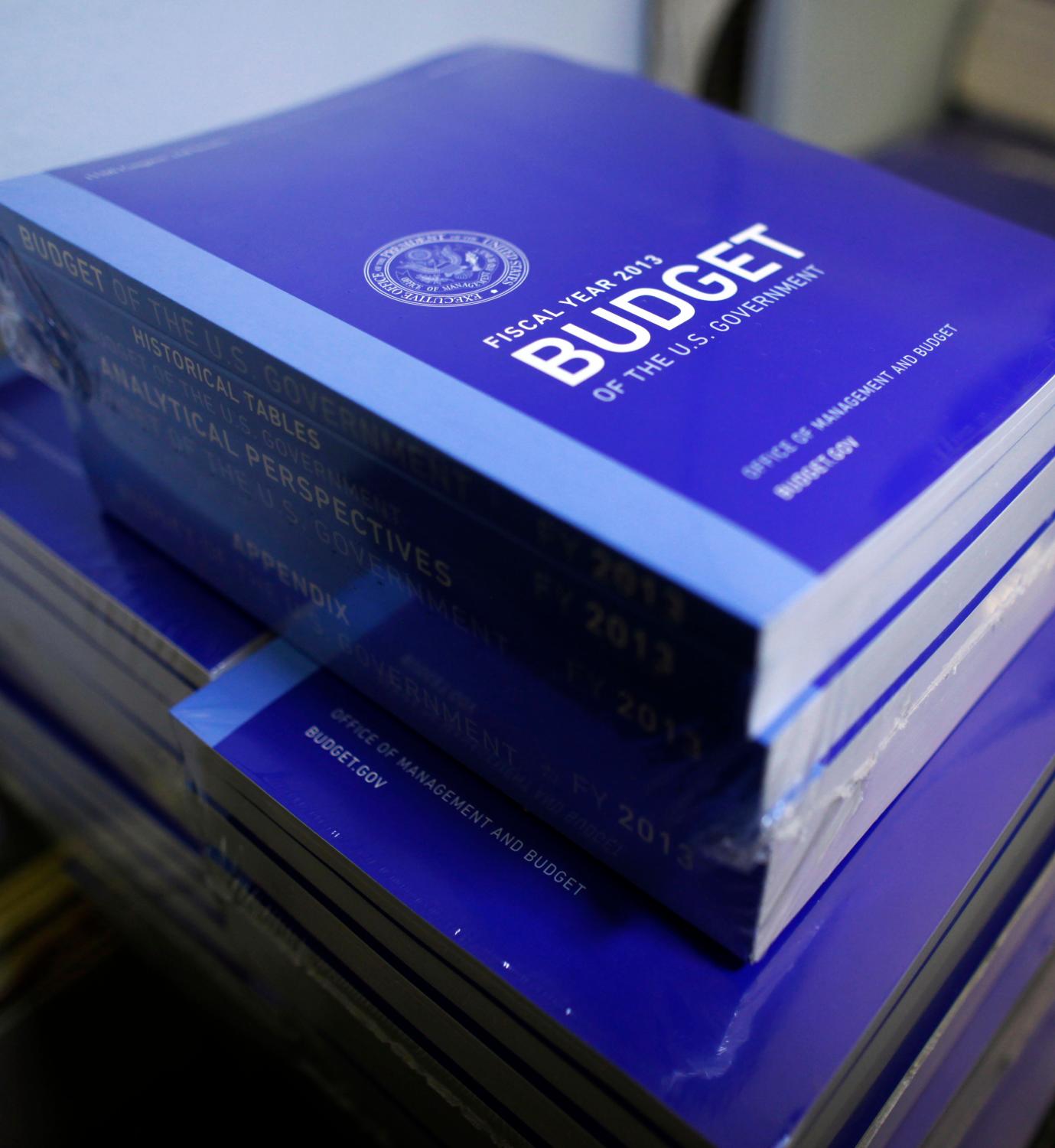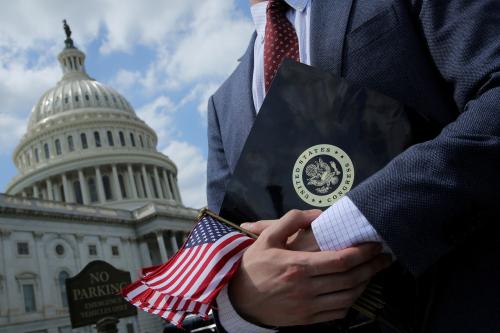Congress has wisely been taking fiscal steps to blunt the economic consequences of COVID-19, even as the legislation has sharply increased projected federal deficits and debt.
While there has been broad support for this urgent action to stabilize the economy, there is debate about the longer-term risks associated with the strategy. We are among those who have argued that now is the time to accompany further stimulus measures with budget tools that would begin to address the risk from mounting deficits and debt. Others argue that the budgeting focus right now needs to be exclusively on stimulus, or claim that the risks of debt are exaggerated.
While there is legitimate debate about the long-term economic dangers of debt-financed stimulus spending, and those dangers are indeed uncertain, there is little doubt that the already precarious condition of major trust fund programs, such as Social Security, Medicare and the highway program, is deteriorating. Even before COVID-19 struck, balances in the trust fund for Medicare Part A (Hospital Insurance) were projected to be depleted by 2026, Disability Insurance (SSDI) by 2028, Old-Age and Survivors Insurance (OASI) by 2034, and the combined Highway Trust Fund by as soon as 2022. Recent sharp increases in unemployment and the abrupt and deep economic slowdown mean less revenue than expected going into the funds this year and likely next. And in each program, a depleted trust fund requires, by law, a reduction in benefits.
The threat to the trust fund programs, exacerbated by current economic conditions, is thus real and urgent. Debt-increasing stimulus spending will provide some help by somewhat slowing the unanticipated decline this year in payroll and gasoline taxes, but it is important to consider steps now to ensure that the major trust fund programs can finance their promised benefits.
 GAO: Federal Trust Funds and Other Dedicated Funds (2020) [1]
GAO: Federal Trust Funds and Other Dedicated Funds (2020) [1]
What the Trust Act Would Do
Bipartisan, bicameral legislation was introduced last October to do that, and the sponsors are now pressing for the legislation to be part of additional action on COVID-19. The TRUST Act (S. 2733, H.R. 4907) would create commissions known as “Rescue Committees.” These commissions would be established for any trust fund spending more than $20 billion annually that faces insolvency by 2035. Those criteria would currently apply to Old-Age and Survivors Insurance (OASI), Medicare Hospital Insurance (HI), the Highway Trust Fund, and possibly the Social Security Disability Insurance (SSDI).
The special commissions would consist of current members of Congress, with three members chosen by each majority and minority leader in the House and Senate. Within 45 days of enactment, the Secretary of the Treasury would be required to submit a report identifying the programs meeting the size and insolvency criteria. The Rescue Committees would then seek to agree on a package of proposals with legislative language, designed to avoid trust fund depletion and assure long-term solvency. To be voted out by a Rescue Committee, a package would require the support of both a majority of the Committee and at least two members of each party. If that were accomplished, the qualifying legislative package would then receive expedited consideration in each chamber[2], meaning that Congress would have to consider each Rescue Committee package without amendment and according to a timetable.
Comparing Rescue Committees with Other Commissions
While the TRUST Act has garnered bipartisan support in both chambers, it has also encountered the criticism that the combination of a commission and expedited consideration would bypass proper legislative procedures and, some critics say, lead inevitably to across-the-board cuts in the major trust fund programs.
We have explored the history of using commissions to address budgetary matters, including congressional commissions like those in the TRUST Act. We reviewed the success – or otherwise – of such commissions as the 1981 Greenspan Commission on Social Security, the Defense Base Closing and Realignment Commission (BRAC), and others. That history, and the design of the TRUST Act, underscores some important features of the legislation:
- A Rescue Committee can only vote out a package of legislative proposals that has not just the support of a majority of the commission but also the backing of at least two of the six members of each party. Historically, a high bar such as this is needed to win the support of Congress for the formation of a commission and for congressional acceptance of its proposals. This makes it almost certain that any successful trust fund legislation would have to be a compromise rather than the favorite of either party or any constituency.
- The membership of the Rescue Committees would be active members of Congress, not outside experts or stakeholders. Proposing a membership roster of existing members appointed by congressional leadership makes it more likely that the TRUST Act commissions, and their resulting reports, would be acceptable to Congress. But there is also a danger: the commissions could encounter the same kind of gridlock seen frequently in the full Congress.
- Unlike some other commissions, such as BRAC or the Affordable Care Act’s now-repealed Independent Payment Advisory Board (IPAB), the Rescue Committees’ proposals would not go into effect if Congress failed to block them. Recognizing the deliberative nature of the upper chamber, the Trust Act preserves the 60 votes required to invoke cloture for final passage in the Senate. Moreover, both chambers and the President would still have to give their approval for the proposals to become law. Thus, the TRUST Act would not be an end-run around Congress; rather, its Rescue Committees would essentially be a vehicle to try to jump start action by lawmakers.
- Even if the TRUST Act becomes law, the history of commissions suggests that the Rescue Committees will still need to attract the support of congressional leaders for a package of actions to be passed by Congress. And without that support, even gaining agreement within the Rescue Committees would be difficult. Leadership support, in turn, will be influenced by the degree to which the public becomes anxious at the prospect of benefits or spending being cut automatically with the depletion of a trust fund, and their openness to reforms. As the immediate COVID-19 household economic concerns to begin to subside, the looming depletion of the Highway Trust Fund could raise concerns about the infrastructure needed for a sustained recovery. The prospect of a depleted Medicare HI fund just a few years later could further heighten public anxiety. Both these public concerns could weigh on congressional leaders and increase their support for the Rescue Committees.
The plight of the major trust fund programs is nothing new. Trustees for the funds, as well as the Congressional Budget Office, have regularly issued warnings as depletion dates edge closer. But placing these programs on a sound financial trajectory is politically difficult. The TRUST Act’s commission approach recognizes this political problem and offers a vehicle to make it politically easier for lawmakers to support necessary reforms.
[1] According to CBO estimates, the SSDI trust fund will be depleted in 2028; however, the Social Security Trustees calculate depletion occurring in 2052 due to differing assumptions and methodologies. Under the TRUST Act, the Secretary of the Treasury would determine whether SSDI would be included in the reforms.
[2] Once reported favorably by a Rescue Committee, a qualifying bill would be referred to the appropriate standing committees of jurisdiction. The committees could report the bill favorably, but if that did not happen it would automatically be discharged after 10 days and sent to the floor.
The Brookings Institution is committed to quality, independence, and impact.
We are supported by a diverse array of funders. In line with our values and policies, each Brookings publication represents the sole views of its author(s).









Commentary
Op-edHow the TRUST Act would help buttress key programs
June 12, 2020